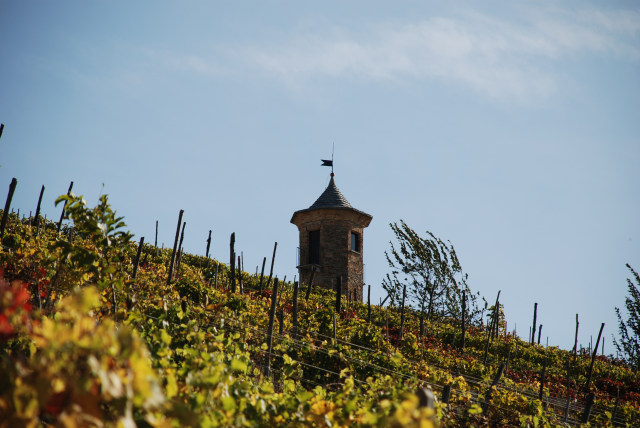Canelli
Last update 30 January 2024
The thousand shades of Canelli: in the capital of sparkling wine, a street for lovers in the shadow of baroque jewels
Landscape
Canelli is one of the main centers of the Belbo Valley.
The beauty of the area, which is purely hilly, was recognized as a UNESCO heritage site on June 22, 2014.
Canelli represents with Nizza Monferrato the second-largest center in population (over 10000 inhabitants) and importance in the Asti area, after Asti: it is about 28 km from the provincial capital.
Insights
“La Città”. Comune di Canelli, Jun. 4, 2015, www.comune.canelli.at.it/servizi/Menu/dinamica.aspx?idSezione=222&idArea=2180&idCat=522&ID=522&TipoElemento=categoria. Last accessed Jan. 7, 2024.
History
Prehistory
The territory is inhabited by the Ligurians Stazielli.
Roman Era
Vines are begun to be cultivated in Canelli.
Middle Ages
Revival period in the 11th century under the rule of the Counts of Acqui.
The rule of the Asinari and Scarampi families
Under the regency of the influential Asinari and Scarampi families, the fief of Canelli became a Marquisate.
18th century
Begins the development of the wine industry, which, to this day, is still the backbone of the local economic fabric.
Insights
“Cronologia storica”. Comune di Canelli, May 23, 2012, www.comune.canelli.at.it/servizi/Menu/dinamica.aspx?idSezione=222&idArea=2180&idCat=522&ID=533&TipoElemento=Pagina. Last accessed Jan. 7, 2024.
“La Città”. Comune di Canelli, Jun. 4, 2015, www.comune.canelli.at.it/servizi/Menu/dinamica.aspx?idSezione=222&idArea=2180&idCat=522&ID=522&TipoElemento=categoria. Last accessed Jan. 7, 2024.
Administration
The Municipality of Canelli boasts the title of “City”.
Insights
“Il titolo di “Città””. Comune di Canelli, Jun. 12, 2017, www.comune.canelli.at.it/servizi/Menu/dinamica.aspx?idSezione=222&idArea=455&idCat=455&ID=455&TipoElemento=area. Last accessed Jan. 7, 2024.
Food and wine and typical products
Canelli is known worldwide as the capital of sparkling wine (Spumante).
The wine industry began to develop in the eighteenth century and still today, thanks to such outstanding products as Muscat d'Asti (see: Associazione Produttori Moscato Canelli) and Asti Spumante, it remains one of the city's main resources.
An opportunity to taste them is represented by the Canelli Città del Vino review, in the month of June.
Canelli is home to historic wineries.
Among the secrets that guarantee the absolute quality of Canelli's wines, a fundamental role is represented by their conservation: here were born the famous Underground Cathedrals (also included in the UNESCO World Heritage Site) of the historic Spumante houses Bosca, Contratto, Coppo, and Gancia.
The development of oenology has been accompanied by the gradual establishment of the oenomechanical sector.
Canelli is not only a land of great wines but also of highly prized delicacies for the palate, such as the white truffle: an opportunity to taste it is during the Regional Truffle Fair hosted, in Canelli, in November.
Insights
“Piatti tipici del territorio”. Comune di Canelli, May 31, 2012, www.comune.canelli.at.it/servizi/Menu/dinamica.aspx?idSezione=222&idArea=2180&idCat=561&ID=707&TipoElemento=Categoria. Last accessed Jan. 7, 2024.
“Prodotti tipici del territorio”. Comune di Canelli, May 23, 2012, www.comune.canelli.at.it/servizi/Menu/dinamica.aspx?idSezione=222&idArea=2180&idCat=561&ID=584&TipoElemento=Categoria. Last accessed Jan. 7, 2024.
To be seen
The city is divided into two distinct areas: the Borgo and Villanuova.
The itinerary to discover Canelli begins in Piazza Amedeo d'Aosta, where Casa Scarazzini is located.
It continues in the direction of Piazza San Tommaso where we find the parish chuch of St. Thomas (chiesa parrocchiale di San Tommaso) which preserves a precious baptismal font inside; in front of it the Church of the Annunziata (Chiesa dell'Annunziata) is visible.
On the right side of the Church of St. Thomas begins one of the most characteristic and beloved streets of Canelli: the Sternia, a steep cobbled road (now via Villanuova) that climbs the Villanuova area to the Gancia Castle.
The route offers striking viewpoints and was further enhanced in September 2018, with the creation of “The Way of the Lovers (La Via degli Innamorati)”.
Continuing along the Sternia we reach Piazza San Leonardo where we find one of the Baroque jewels of the Astigiano: it is the Church of St. Rocco (Chiesa di San Rocco).
The church's lapidarium contains four funeral stelae from the Roman era.
Opposite the Church of St. Roch stands the Church of St. Leonard (Chiesa di San Leonardo).
Reaching the top of the hill of Villanuova we find the imposing Gancia Castle (Castello Gancia).
Other noteworthy historic buildings are the aforementioned Casa Scarazzini, Casa Cornaro, Centro “Lazarito Bocchino”, Palazzo Grasso — Stresia, whose lines recall Palazzo Crova di Vaglio and Palazzo Osasco (formerly Palazzo Scarampi).
In Canelli, the cultural offer is enriched by the presence of appealing museums: the MU.S.A. (Multimedia Museum of Southern Asti), Bocchino Distillery Museum (Museo della Distilleria Bocchino), Vineyard, Wine, and Old Habits of Farmers Museum (Museo della Vigna, del Vino e delle Vecchie Abitudini Contadine) and Gancia Museum (Museo Gancia).
Outdoor enthusiasts should note the presence of a giant bench, the Contini Tower (Torre dei Contini), visitable, and a panoramic terrace in via Villanuova.
Suitable places for a selfie are, finally, the monumental plane tree, the giant bottle provided by Cantine Gancia, and the chairs, also giant, in Via Roma, as well as the special rack — Canelli Sparkling Love project dedicated to lovers and the artistic bench on the UNESCO Belvedere.
Insights
“Edifici religiosi”. Comune di Canelli, May 30, 2013, www.comune.canelli.at.it/servizi/Menu/dinamica.aspx?idSezione=222&idArea=2180&idCat=462&ID=562&TipoElemento=categoria. Last accessed Jan. 7, 2024.
“Edifici storici”. Comune di Canelli, May 30, 2013, www.comune.canelli.at.it/servizi/Menu/dinamica.aspx?idSezione=222&idArea=2180&idCat=522&ID=563&TipoElemento=Categoria. Last accessed Jan. 7, 2024.
“Monumenti”. Comune di Canelli, May 30, 2013, www.comune.canelli.at.it/servizi/Menu/dinamica.aspx?idSezione=222&idArea=2180&idCat=462&ID=462&TipoElemento=categoria. Last accessed Jan. 7, 2024.
“MU.S.A. (Museo multimediale del Sud Astigiano)”. Comune di Canelli, May 25, 2012, www.comune.canelli.at.it/servizi/Menu/dinamica.aspx?idSezione=222&idArea=2180&idCat=940&ID=942&TipoElemento=categoria. Last accessed Jan. 7, 2024.
Curiosity
In 1865, the first Italian sparkling wine was produced in Canelli.
Data source
- Synthesis / reprocessing information taken from the institutional website (current and previous versions) of the Municipality of Canelli — https://www.comune.canelli.at.it/servizi/notizie/notizie_homepage.aspx
- Cover image source: Municipality of Canelli — https://www.comune.canelli.at.it/servizi/notizie/notizie_homepage.aspx
Insights
BeWeb - Beni Ecclesiastici in WEB
https://beweb.chiesacattolica.it/
Catalogo Generale dei Beni Culturali
https://catalogo.beniculturali.it/
Ente Turismo Langhe Monferrato Roero
https://www.visitlmr.it
Wikipedia, l'enciclopedia libera.
https://it.wikipedia.org
See also
News from Canelli
- Discover the latest news posted on the website of the Municipality of Canelli
https://www.comune.canelli.at.it/servizi/notizie/notizie_fase01.aspx?categoriaVisualizzata=19
Social network | Municipality of Canelli
Follow your Municipality on social media:
- Facebook: https://www.facebook.com/cittadicanelli
- Instagram: https://www.instagram.com/visitcanelli/
- Twitter: https://twitter.com/CittaCanelli
- YouTube: https://www.youtube.com/channel/UCIXKgToaTpIcwhIByzDRAjg

